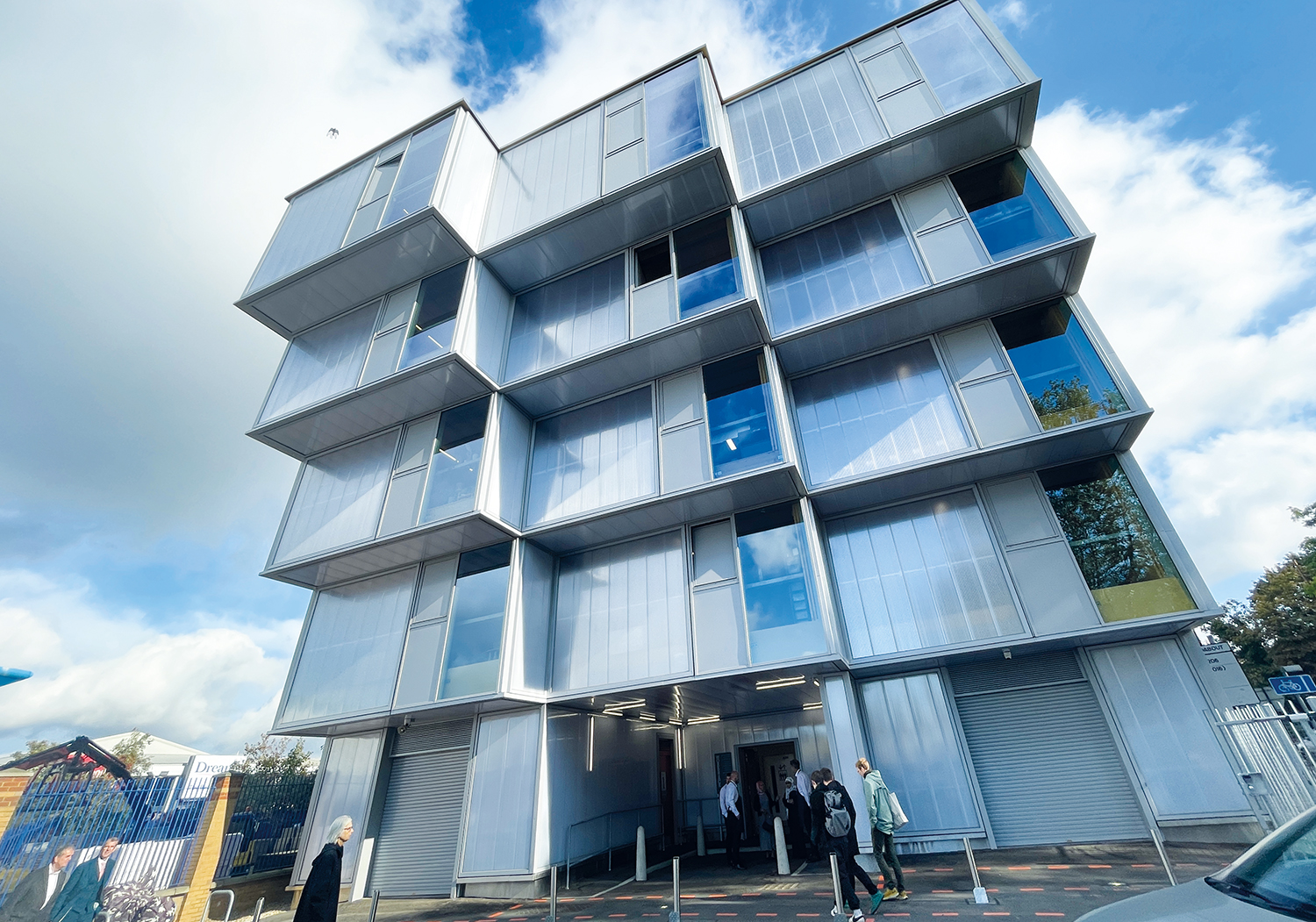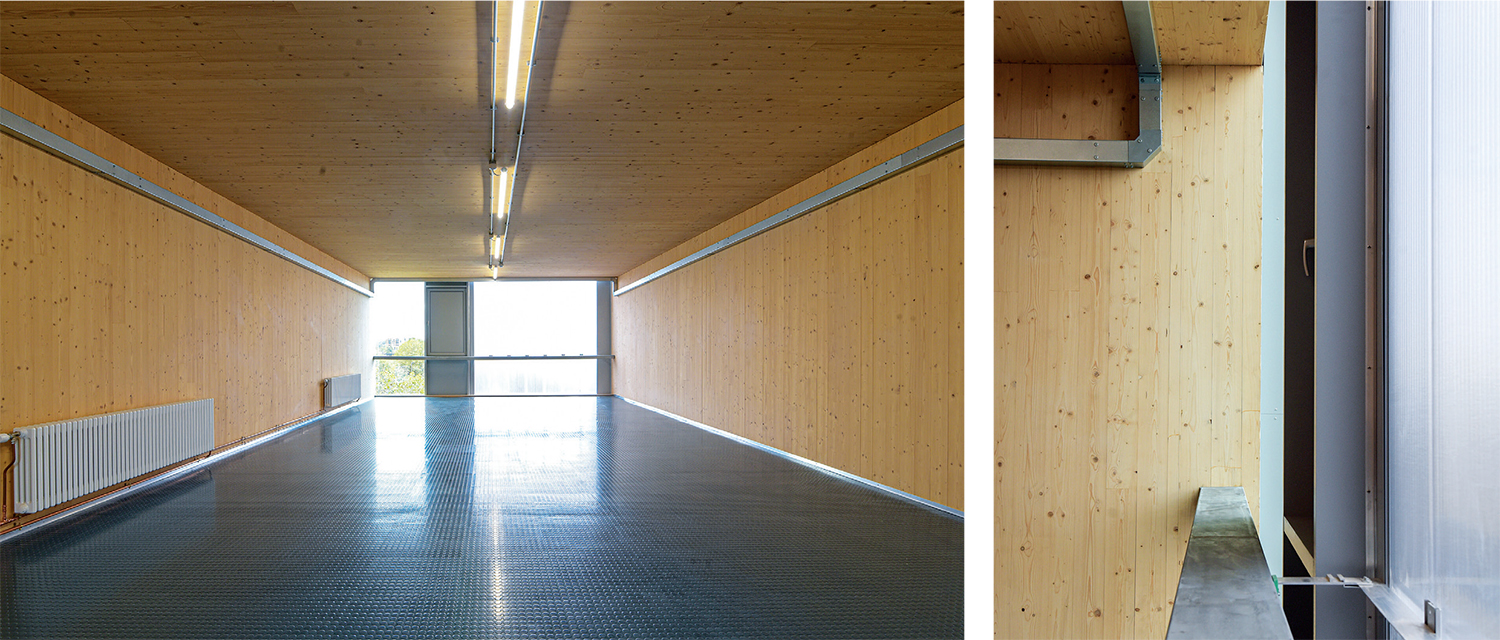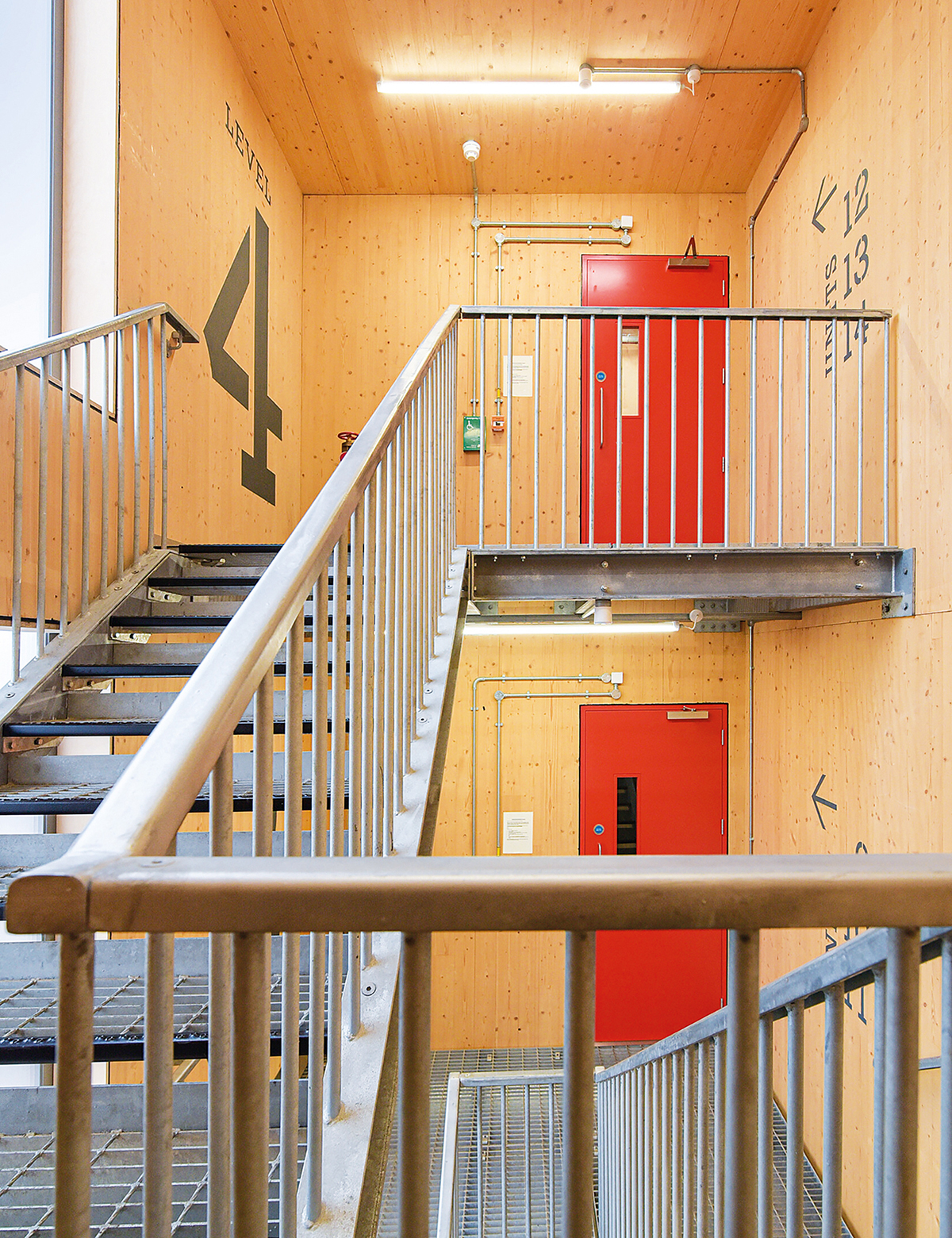
A timber-framed industrial building designed by Arup shows that sustainability and fire safety can go hand in hand, write Judith Schulz and Simon Bateman.
Although demand for office space in UK cities is higher than before the pandemic, high rates for residential rent have been slowly forcing industry further and further out. However, this becomes unsustainable for many people who cannot afford – or don’t want – to relocate.
A solution to this problem is the WorkStack: a distinctive five-storey workspace structure that uses a cross-laminated timber (CLT) frame, and is the first of its kind in this building type in the UK.
Designed by Arup, dRMM and Webb Yates for the Greenwich Enterprise Board (GEB), the WorkStack maximises sustainable material choices, enabled through a bespoke performance-based fire safety strategy. In London, the Charlton WorkStack is already used by local businesses.
Material choices to reduce emissions
The CLT structure uses a renewable resource, replacing traditional materials such as concrete or steel. By exposing the eye-catching timber frame, the project team also reduces the need for finishes, further reducing the embodied carbon footprint of the structure by ‘building less’. This has the added benefit of enhancing occupant wellbeing, given interactions with natural materials are associated with improved mental health.
The use of timber contributes significantly to the building’s A rating under the Structural Carbon Rating Scheme. The project falls 44% below the RIBA 2030 embodied carbon targets for whole life carbon, and 21% less than LETI 2030 design targets.
Tailored fire safety measures
Nonetheless, the choice of timber – a combustible material – came with the need for enhanced safety considerations, with fire safety fully integrated into the design of the project, from conceptualisation through construction into operation.
The fire safety strategy seen in the WorkStack is informed by Arup’s history in delivering timber buildings globally, alongside involvement in independent research and testing of the fire performance of mass timber.
In addition, the project team worked closely with the London Fire Brigade and regulatory authorities to develop a design approach that speaks to the building’s location, specific geometry and user profiles to maximise fire safety.

The resulting fire strategy comprises multi-layered fire protection measures tailored to the WorkStack. These include a smoke ventilation system with bespoke performance criteria defined for this development, demonstrated through computational fluid dynamics (CFD) software analysis, and enhanced provisions for firefighter access to enable rapid firefighting intervention, both from the outside, and from the inside supported by a dry riser.
The design carefully considered and controlled the location and extent to which combustible materials are exposed and set stringent fire safety performance criteria for the CLT panels, the structural connections, and other systems that need to interface with the CLT panels, such
as fire doors and fire dampers.
Large-scale testing
The arrangements in this building resemble those found in residential buildings that are internally highly subdivided, but without the sleep risk occupancy. Other commercial and light industrial buildings typically have large open plan arrangements.
To expand knowledge of building safely with timber, Arup, in collaboration with Imperial College London and CERIB – a fire test facility in France – conducted a series of experiments, called CodeRed.
A 380 sq m size combustible test compartment representing an office of approximately 40 people allowed Arup to study how fires and spread in larger spaces and explore the effectiveness of protective features on fire dynamics. Arup uses these results to drive numerical modelling of the fire behaviour of exposed timber.

For Charlton WorkStack, compartments are comparatively small, as loadbearing walls separate the rental units, which are designed as separate compartments. There are generally three compartments per floor, subdividing the building much more than in a traditional building configuration, helping to limit fire spread.
External walls are encapsulated in non-combustible materials so that the loadbearing mass timber structure is used within the bounds for which its performance has been evidenced through testing and analysis. The ground floor and higher-risk plant rooms are also constructed from non-combustible materials.
Charlton WorkStack is a prototype future urban industrial building, helping to solve social challenges through imaginative architecture and multidisciplinary engineering. It is proof that sustainability and safety can go hand in hand, laying the foundations for further adoption of mass timber construction.
Judith Schulz is director for fire safety engineering and Simon Bateman is senior engineer for structural engineering at Arup.











